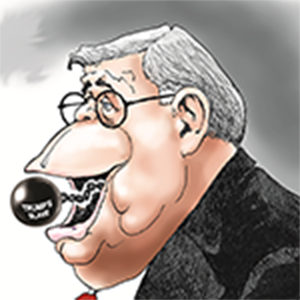Defense rests after biomechanics expert testimony in Karen Read retrial
Published in News & Features
DEDHAM, Mass. — The Karen Read defense rested its case after testimony from their final witness, who reiterated his opinion that the evidence does not support the prosecution’s theory that a vehicle strike killed John O’Keefe.
“My opinion is that the evidence is inconsistent with Mr. O’Keefe being struck on the right arm by the SUV and then moving laterally into the yard and then falling backward onto the back of his head,” said Andrew Rentschler, continuing his testimony from Tuesday.
Read, 45, of Mansfield, faces charges including second-degree murder in the Jan. 29, 2022, death of O’Keefe, her boyfriend and a Boston Police officer. She was tried last year on the same charges but that ended in mistrial.
“There was no bruising, there was no laceration, there was nothing at the alleged point of contact which would indicate an impact that produces thousands of pounds of force on the arm,” added Rentschler, a PhD senior biomechanist with the engineering consultancy ARCCA. “No evidence for it whatsoever.”
In a lighter moment, Rentschler wished one of his three children a happy 10th birthday from the stand while explaining the scientific process. The example drew an objection for being too personal and he was asked to move along.
Much of Rentschler’s testimony Tuesday had to do with a review of the tests performed by the prosecution’s own expert crash reconstructionist, Judson Welcher, a PhD with competing engineering firm Aperture.
One of Welcher’s conclusions presented in his PowerPoint was examined in detail: “The location and orientation of the lacerations on John O’Keefe’s right forearm and arm are consistent with the geometry and orientation of the right taillight of the Read 2021 Lexus LX570.”
Rentschler testified he had multiple problems with this.
One issue, Rentschler said, is that Welcher described the injuries to O’Keefe’s arm as “lacerations” when they are actually abrasions, and one of the most important aspects of an analyst’s job is to properly identify the injury. Another is that in Welcher’s testing the engineer moved his arm to better fit the angle of the taillight in question when he had a Lexus strike him in reverse at low speed. Another is that the injury pattern doesn’t make sense as being made by cracked taillight pieces.
“You can’t get, for instance, horizontal abrasions on the upper arm and then somehow get vertical and angled abrasions to the forearm,” Rentschler said. “The kinematics don’t work out to produce those types of injuries.”
_____
©2025 MediaNews Group, Inc. Visit at bostonherald.com. Distributed by Tribune Content Agency, LLC.







Comments